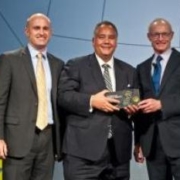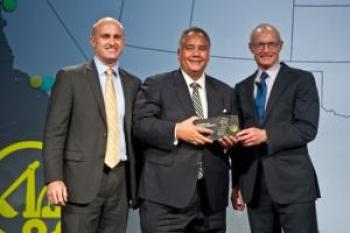 America is rife with complex plots by businesses to illegally dodge workers-comp premiums. The flourishing underground economy that exists in many urban centers adds more kindling to the fraud fire, especially in construction. FraudWire reached out to Matthew Capece, senior executive with the United Brotherhood of Carpenters, for his thoughts. He’s been a specialist in employer payroll fraud in construction since 1989.
America is rife with complex plots by businesses to illegally dodge workers-comp premiums. The flourishing underground economy that exists in many urban centers adds more kindling to the fraud fire, especially in construction. FraudWire reached out to Matthew Capece, senior executive with the United Brotherhood of Carpenters, for his thoughts. He’s been a specialist in employer payroll fraud in construction since 1989.
Workers compensation insurers have long dealt with premium-avoidance schemes. Among the ploys are lowballing workforce size and payroll, and misclassifying employees as independent contractors. How prevalent are premium scams in construction trades, and are any variations unique to construction?
Workers-compensation premium scams involving construction projects are alarmingly commonplace. They regularly occur on residential projects. We even find them on large commercial sites, schools, hospitals, high-rise condos and government jobs like military bases. Fraud has become standard operating procedure in a number of states, including Colorado, Florida, Georgia and Tennessee. But it is happening all across the country.
The schemes vary in sophistication, but the growing practice is using subcontract labor brokers. For instance, interior-systems specialty subcontractors install metal studs, sheetrock and ceilings. They also provide supervision and, maybe, some hands-on labor.
The bulk of their labor comes from brokers. Yet the specialty subcontractor supervises and treats the labor brokers’ workers like their own employees. Labor brokers aren’t staffing companies; they are individuals who can muster a handful to hundreds of construction workers. They may have a business office, but much of the time they operate out of a residence. They can either be incorporated or be dba’s.
Labor brokers will misclassify employees as 1099 subcontractors, but most pay employees under the table in cash or with a check. Some labor brokers are uninsured and use fake certificates of insurance, but many have policies. The problem is they pay premiums on a fraction of their true payrolls. There is a case in Florida where an insurance broker issued 450 insurance certificates to a labor broker, claiming $43,000 in payroll for four workers. Sophisticated schemes like those in Florida involve insurance brokers, accountants, upper-tier contractors, shell companies and check-cashing stores.
These schemes work well for specialty subcontractors. They use the lower labor costs from the brokers to underbid law-abiding competitors, while brandishing the subcontract relationship with brokers and insurance certificate to shield against liability. That is how they drive full-premium-paying contractors out of business and take control of markets.
I am not as familiar with other industries as I am with construction. I do know that the labor-broker system grew from the agricultural industry. In general, the practice of subcontracting labor has been growing. Still, the various studies of fraudulent employment practices universally list construction as a leading abuser.
We know it’s hard to measure workers compensation fraud nationally. Still, do you have any sense of how big premium scheming is (including lost revenues), and how it compares to bogus work injury claims in overall size?
I haven’t found a national study on the degree of workers-compensation premium fraud in the construction industry, but there are state studies. In Tennessee, carriers lost $91.6 million in 2006 and in California they lost $264 million in 2011. We think those estimates are low. Consider the 2008 West Palm Beach, Florida Grand Jury report on illicit use of check-cashing stores. The report described how just 10 contractors moved $1 billion in cash pay through check cashers in less than three years. You can find these studies and reports on our informational website.
Claimant fraud is less costly than employer premium fraud. A California report, though, shows premium fraud losses to carriers are much greater than claimant fraud. Total fraud losses from cases with the Department of Insurance amounted to $8 million in the first six months of 2013. Of that, $6.7 million came from premium fraud and $1.3 million from false claims. Those numbers were not broken down by industry. It’s noteworthy that claimant fraudsters were more likely to get jailed than employers.
Carriers are losing a shocking amount of premiums. Still, despite the significant dollars lost, premium fraud doesn’t get the attention it should. If we could double the premium-fraud losses caught by California it would mean a yearly number of $13.4 million. That’s just 5 percent of the $264 million lost in the construction industry alone.
How are key states identifying premium schemes and strengthening laws or other enforcement tools to combat them?
A number of states are taking innovative actions against premium fraud. The California insurance department gives grants to county district attorneys to fund insurance fraud prosecutions.
Washington is a monopolistic state. It uses fraud-detection software that compares information in various databases to identify likely abusers for premium-fraud audits. Tennessee is a private-market state. It has just installed a similar system. The legislature funded the system and additional compliance investigators. They also added a law creating civil penalties for premium avoidance.
Florida has dedicated workers-compensation compliance prosecutors in select counties. They also have a new database that gets real-time information about checks cashed at check-cashing stores that they compare to proof-of-coverage information. Both Florida and Connecticut also have demonstrated that they aren’t afraid to use their stop-work-order authority.
States need robust tools for both civil and criminal enforcement. But they can’t just be used against labor brokers. Enforcement must reach all parties involved, including the specialty subcontractors and other upper-tier contractors involved in schemes. Labor brokers are abundant and easily replaced.
How can the anti-fraud community partner with your union to combat workers-comp premium scams?
Because we are a construction union, we know how the industry operates, and specific job-site conditions and cheating employers. We can share that information with carriers and enforcement agencies willing to act. We also welcome others to work with us to strengthen state and federal law- enforcement capabilities. They include union and non-union employers, carriers and community organizations.
But it can’t stop there. We each must examine our own practices that encourage, enable or fail to detect fraud. The construction industry must change course and stop awarding work to scofflaws. Insurance certificates need to be modified so insurers can track the number being issued, and insurance certificates should indicate the amount of payroll and work classifications. Also, insurers should re-evaluate their auditing procedures, and whether premiums truly capture the risk posed by contractors and subcontractors using the labor-broker system.
Also, educating stakeholders is a large part of what we do. For more information, follow us on Twitter @nixpayrollfraud and visit payrollfraud.net.
We are prepared to engage with fellow stakeholders. Action is needed. Contractors who pay their full premiums are being marginalized in significant markets. They face increasing pressure to join in illegal schemes or go out of business. Moreover, insurance carriers are losing millions in premiums daily.
Source: Fraud Wire
Photo: Fraud Wire
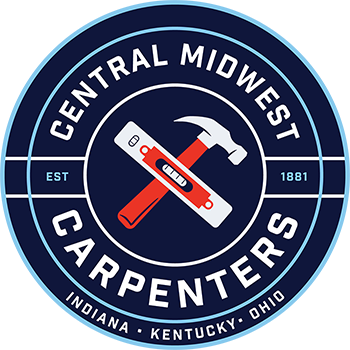
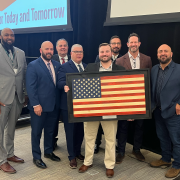
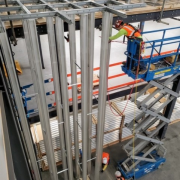
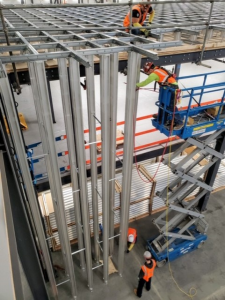

 America is rife with complex plots by businesses to illegally dodge workers-comp premiums. The flourishing underground economy that exists in many urban centers adds more kindling to the fraud fire, especially in construction. FraudWire reached out to Matthew Capece, senior executive with the United Brotherhood of Carpenters, for his thoughts. He’s been a specialist in employer payroll fraud in construction since 1989.
America is rife with complex plots by businesses to illegally dodge workers-comp premiums. The flourishing underground economy that exists in many urban centers adds more kindling to the fraud fire, especially in construction. FraudWire reached out to Matthew Capece, senior executive with the United Brotherhood of Carpenters, for his thoughts. He’s been a specialist in employer payroll fraud in construction since 1989.

